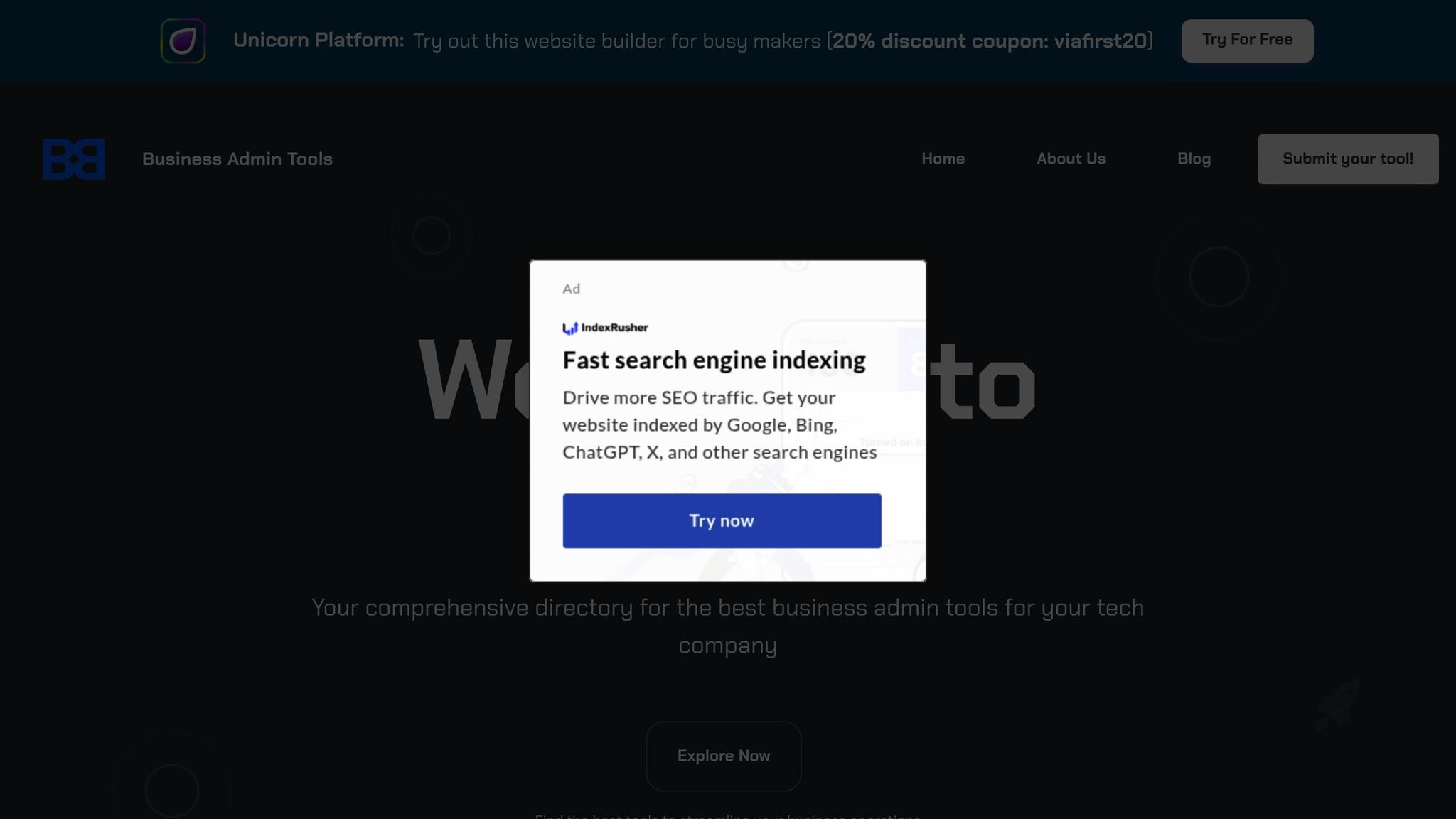Want to know if chatbots are worth the investment in 2025? Here's the quick answer: Chatbots can save businesses money, boost customer satisfaction, and increase sales. They handle up to 70% of customer inquiries, saving time and cutting costs. Here's what you need to know:
- Cost Savings: Measure agent hours saved, query resolution rates, and reduced operating expenses.
- Customer Satisfaction: Track response times, issue resolution rates, and satisfaction scores.
- Revenue Growth: Focus on lead generation, conversion rates, and average order value.
How to Calculate ROI: Use the formula:
ROI = [(Total Benefits - Total Costs) / Total Costs] × 100
For example, if you invest $30,000 and gain $90,000 in benefits, your ROI is 200%.
Tools to Simplify Tracking: Platforms like BizBot help monitor metrics like cost savings, revenue impact, and customer service performance in real time.
What are the Benefits to a Business of Using a Chatbot for ...
ROI Measurement Metrics
Measuring the return on investment (ROI) of chatbots involves tracking specific performance metrics across various business functions. These metrics allow companies to clearly evaluate the value their chatbot investments provide in 2025. Below are key metrics for cost savings, customer satisfaction, and sales performance.
Cost Reduction Metrics
When it comes to cost savings, focus on these key indicators:
| Metric | Focus | How to Measure |
|---|---|---|
| Agent Hours Saved | Reduction in customer service time | Multiply hours saved by the average hourly wage |
| Query Resolution Rate | Percentage of issues resolved by chatbot | Compare costs with human agent resolutions |
| Operating Expenses | Overall support cost reductions | Track monthly savings in staffing and resource expenses |
Track both short-term and long-term savings for a complete picture.
Customer Satisfaction Metrics
These metrics assess how chatbots impact customer experience:
| Indicator | Target Range | Impact |
|---|---|---|
| Response Time | Under 30 seconds | Improves customer satisfaction |
| Issue Resolution | Over 70% on first contact | Reduces the number of support tickets |
| Customer Satisfaction Score | Above 4.0 out of 5.0 | Boosts customer loyalty |
These metrics highlight how chatbots enhance customer retention and overall value.
Sales Performance Metrics
Sales data shows how chatbots drive revenue growth:
| Metric | How to Measure | Business Impact |
|---|---|---|
| Lead Generation | Number of new qualified leads | Increases revenue potential |
| Conversion Rate | Completed sales via chatbot | Tracks direct revenue contributions |
| Average Order Value | Purchase size with chatbot assistance | Measures revenue per interaction |
Regularly analyzing these metrics helps businesses refine their chatbot strategies to maximize ROI.
To simplify tracking, use business tools that consolidate these metrics into actionable insights. This enables data-driven decisions and ensures chatbots deliver measurable value over time.
ROI Calculation Methods
To measure ROI effectively, you need a straightforward method to compare costs with benefits. The basic formula for chatbot ROI is:
ROI = [(Total Benefits - Total Costs) / Total Costs] × 100
This formula helps businesses assess how well their chatbot is performing. To calculate ROI, break down the key components:
- Total Costs: Includes implementation, maintenance, training, integration, and staff time.
- Total Benefits: Covers labor cost savings, increased sales, improved efficiency, reduced expenses, and monetized time savings.
Sample Calculations
Let’s look at an example. A company invests $30,000, which includes $15,000 for implementation, $5,000 for training, and $10,000 for integration. Annual benefits amount to $90,000, broken down as $45,000 in labor savings, $25,000 from increased sales, and $20,000 in operational cost reductions.
The ROI calculation would be:
ROI = [($90,000 - $30,000) / $30,000] × 100 = 200%
This means the company earns two dollars for every dollar invested.
Measurement Tools
Tracking ROI requires reliable analytics tools. Here's how you can measure key areas:
| Tracking Area | Key Metrics | Measurement Frequency |
|---|---|---|
| Cost Savings | Labor hours saved, reduced expenses | Monthly |
| Revenue Impact | Sales conversions, average order value | Weekly |
| Customer Service | Resolution rates, response times | Daily |
| Overall ROI | Full cost-benefit analysis | Quarterly |
Tools like BizBot simplify this process by consolidating data and providing detailed ROI reports. Features include real-time monitoring, automated data collection, custom reporting, system integration, and visualized metrics.
These methods lay the groundwork for strategies to further enhance chatbot ROI.
sbb-itb-d1a6c90
Improving ROI Results
Enhancing Performance
Boosting performance involves several key strategies:
- Using AI to improve response quality and ensure contextually relevant interactions
- Offering personalized, multilingual support to cater to diverse audiences
- Automating workflows and syncing data for smoother operations
By connecting chatbots with your existing systems, you can create workflows where customer interactions automatically trigger actions across departments. This integration streamlines operations and helps manage costs effectively.
Managing Costs
After improving performance, keeping expenses under control is essential for better ROI. Here are three practical ways to achieve this:
- Automated Response Systems: AI-powered tools can handle routine customer inquiries, reducing the need for large support teams.
- Workflow Simplification: Unified workspace platforms help streamline processes, cutting down on administrative tasks.
- Digital Solutions: Tools like electronic signatures and document management systems eliminate the costs of traditional paperwork.
Driving Revenue Growth
Turn your chatbot into a tool for increasing revenue with these smart strategies:
- 24/7 Availability: Provide constant customer assistance through automated support.
- Smart Lead Routing: Quickly connect high-value leads with the right sales teams.
- Cross-Selling Opportunities: Use personalized recommendations to encourage larger purchases.
Tracking these efforts with clear metrics can maximize your chatbot's ROI. BizBot offers a suite of business tools that integrate seamlessly, helping you optimize chatbot performance while keeping costs in check.
2025 Market Outlook
E-commerce Updates
Advanced chatbots are reshaping online shopping by offering more personalized and automated experiences. Research highlights that automation in customer service has significantly increased, allowing businesses to provide 24/7 support while cutting costs. These advancements are setting the groundwork for updates in customer support systems, which we'll explore next.
Support System Changes
Customer support is undergoing a major transformation with the rise of automation and AI. These changes are making service delivery faster and more efficient, with noticeable improvements in key areas:
| Area | 2025 Capability | Impact on ROI |
|---|---|---|
| Response Time | Instant replies 24/7 | Cuts support costs by eliminating wait times |
| Query Resolution | 70% automated resolution | Reduces need for large support teams |
| Customer Experience | Personalized interactions | Boosts satisfaction and retention rates |
New Market Sectors
Chatbots, once primarily used in retail, are now gaining traction in other industries. As customer support systems become more advanced, sectors that were previously hesitant about automation are starting to adopt AI-driven solutions. These industries are drawn to the cost savings and efficiency improvements AI can deliver. Companies are also looking for integrated platforms that combine administrative tasks with customer service, further driving adoption across various fields. This shift signals a broader acceptance of AI tools beyond traditional markets.
Conclusion
Key Takeaways
Measuring chatbot ROI is essential for businesses aiming to thrive in 2025. Using chatbots effectively can handle routine tasks, improve efficiency, and lighten the workload for teams. By consistently tracking metrics and refining strategies, businesses can achieve better outcomes. These practices lay the groundwork for using BizBot's tools to get the most out of your chatbot investment.
Overview of BizBot's Tools

Managing chatbot costs and performance calls for the right tools. BizBot offers a suite of features designed to streamline operations. These include performance analytics, subscription cost management, digital CFO services for ROI tracking, and automated expense monitoring. These intuitive tools support businesses in scaling chatbot operations while staying aligned with ROI-focused strategies.

